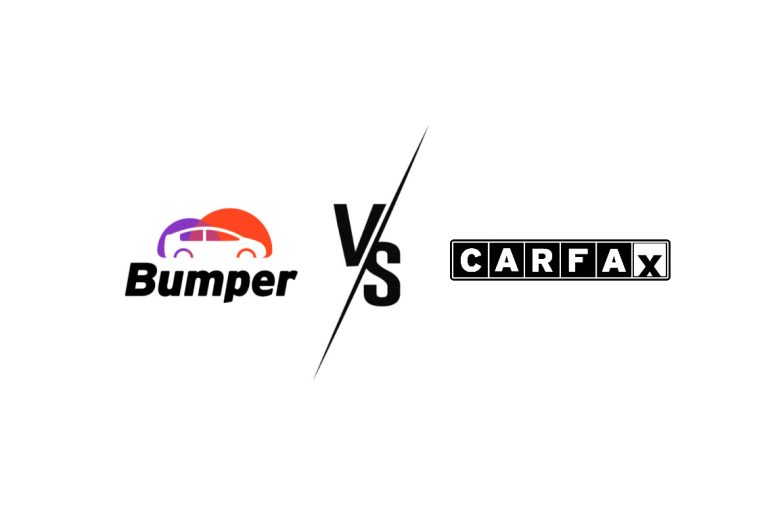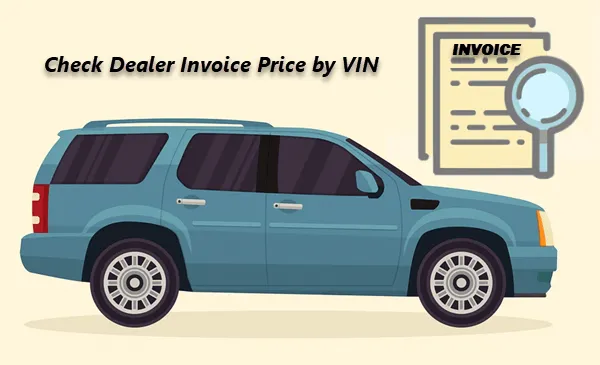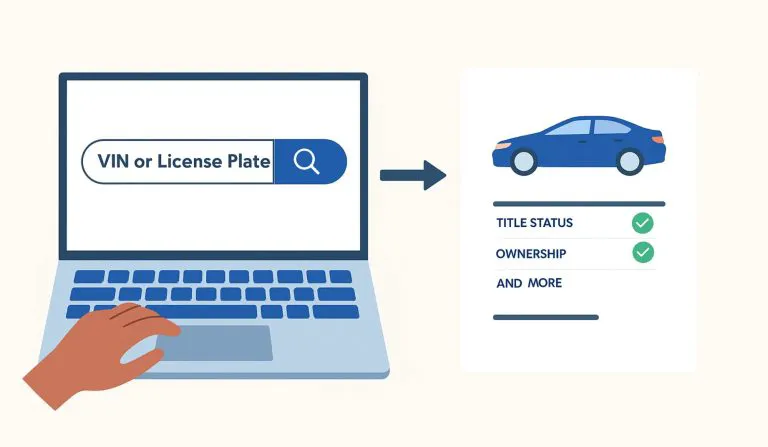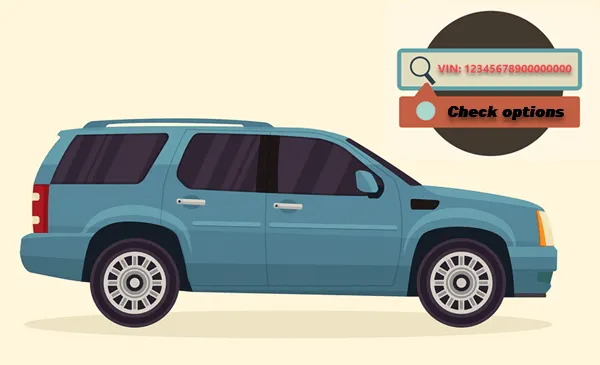How to Run a Motorcycle VIN Check – Accidents, Theft & more
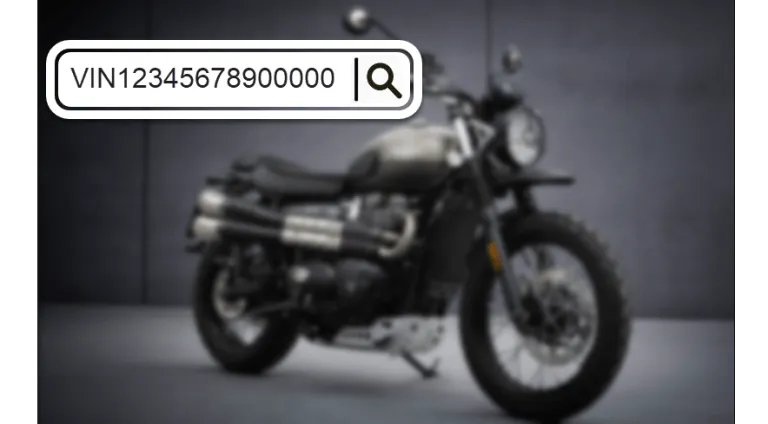
Interested in buying a used Harley-Davidson and want to make sure it hasn’t been in any major accidents and isn’t stolen? Or maybe you’ve recently bought a Honda but aren’t certain of its exact model year? Whatever the case, if you have the motorcycle’s Vehicle Identification Number (VIN), you can uncover a wealth of important details about the bike with a simple VIN check. It’s one of the easiest ways to learn a vehicle’s history and avoid ending up with someone else’s problem or worse. Read on to find out how…
Table of contents
Why running a motorcycle VIN check is so important
If you’re thinking about buying a used motorcycle, running a VIN check* can be extremely helpful. A VIN is a 17-character code unique to each vehicle and acts like its fingerprint. A motorcycle VIN check helps confirm if the bike is stolen or has a salvage title, uncover any past accidents that could affect safety and value, and verify the model year or that its current setup matches the original factory specifications.
🔔 Some riders believe motorcycle accidents are more obvious than on cars, so a vehicle history report isn’t necessary. There’s some truth to that, but not entirely—many issues can still be hidden or repaired well enough to escape notice. For example, just like with cars, flood or fire damage can be cleaned up but still leave long-term problems.
* In some countries or on older bikes, you may hear “chassis number” instead of VIN. For most modern motorcycles, the chassis number is the same as the VIN.
Where to find the VIN on a motorcycle
Before you can run any checks, you’ll need to find the bike’s VIN. The exact VIN location can vary based on the motorcycle’s make and model. But as a general rule, a VIN can be typically found in these locations:
- Steering Neck (Headstock): This is the most common place. Look for a series of numbers and letters stamped directly onto the frame, usually on the right side of the steering head, behind the handlebars.
- Engine Case: A VIN or a portion of the VIN may be stamped on the engine case, near the bottom of the cylinders. This is especially true for older motorcycles.
- Fork: on certain motorcycles, the VIN might be present on the front fork. Check near the top of the fork tubes for a sticker or engraving.
- Under the Seat: while it may not be the most common location, some motorcycles have the VIN sticker or plate placed underneath the seat.
Motorcycle VIN locations by make
Here are the common VIN locations for major motorcycle brands:
- Harley-Davidson: Commonly stamped on the front of the engine block, below the cylinders.
- Honda: Located at the front of the frame near the steering head.
- BMW: Usually located on the right side of the steering head or under the seat near the battery.
- Suzuki: Placed on the steering head or the frame near the motor, depending on the model.
- Yamaha: Typically on the steering head, but sometimes on the side of the frame near the motor.
- Triumph: Found on the steering head or on a VIN plate mounted to the frame beneath the seat.
- Kawasaki: Engraved on the side of the steering head.
- Ducati: Typically found on the left side of the steering head.
- Indian: Usually on the left side of the steering head or on the left side of the frame between the engine and gear set.
- KTM: Found on the right side of the frame, under the seat, or near the steering head.
- MV Agusta: Often located on the right side of the steering head.
💡 You can also find the VIN in official documents such as the owner’s manual, registration card, vehicle title, or even your motorcycle insurance policy.
Method 1. NICB VINCheck – for theft/salvage
The NICB is a nonprofit organization backed by the insurance industry. On its website, the NICB offers a free lookup tool that allows the public to check whether a specific VIN has a record of an insurance theft claim (and not yet recovered), or reported as a salvage vehicle by participating NICB member insurance companies.
To use the NICB VINCheck service, simply visit the official NICB VINCheck website and enter the 17-character VIN of the vehicle you want to investigate. After completing a quick CAPTCHA verification, submit the search.
The tool will then indicate whether the vehicle has any reported theft or total loss records in the NICB database. The screenshot below shows what it looks like when a vehicle is flagged as being listed in their theft records.
While it’s a convenient tool, NICB theft and salvage records only reflect what is reported by member insurance companies and do not include law enforcement data. If a vehicle was indeed stolen but the incident didn’t involve an insurance company, or the insurer is not part of the NICB network, then the NICB may not have a record of the theft. So, NICB results alone aren’t foolproof and it’s a good idea to supplement them with checks from other databases.
Method 2. Use a VIN decoder – for basic specs info
If you’re just looking to find out the model year of a motorcycle or check its basic specs, there are plenty of free VIN decoders that can help. One great option is Super Easy VIN Decoder, a free tool powered by the National Highway Traffic Safety Administration (NHTSA) database. Just enter the 17-digit VIN, and within seconds, you’ll learn about the motorcycle’s make, model, year, manufacturing plant, and even its recall history.
If you’re looking for deeper insights, a full history report is the way to go.
Method 3. Get a vehicle history report – for full history data
If you want a high-quality report without costing an arm and a leg, Bumper is a solid choice. Bumper is one of the few NMVTIS-approved providers. That means it has direct access to the National Motor Vehicle Title Information System, an electronic federal database managed by the Department of Justice. In addition to NMVTIS, Bumper also sources data from NHTSA, JD Power, and many other top industry leaders.
Information you might find in a Bumper report
The report can provide plenty of useful information related to the vehicle’s history, if available, helping you make a more informed decision. Examples of what you could find in Bumper vehicle history reports include:
- Number of owners
- Accident history*
- Events timeline
- Sales history
- Theft records
- Title records
- Recalls
- Market value
- Ownership costs
- Warranties
- Safety ratings
- Full vehicle specs
*Bumper reports are based on data available and may not include historical accident records in all states.
Bumper VIN report: a balance of quality and price
I’ve seen plenty of people on forums frustrated about paying over $40 for a single Carfax report on a motorcycle they’re interested in. But the truth is, motorcycle VIN checks don’t have to cost an arm and a leg. Bumper offers a subscription plan at $27.99/month for up to 50 reports. There’s also a low-cost trial available which allows you to try it out for seven days before you’re charged the full subscription price. It’s an especially cost-effective option if you’re still in the browsing stage and want to check multiple vehicles before making a decision.
To give you an idea of what you might find, the example below shows a theft record for a 2015 Suzuki motorcycle found through Bumper.
In the next example, Bumper’s report revealed both an accident record and salvage records for a 2023 KAWASAKI.
If an accident has been reported, the report usually provides very detailed information, including the date, location, crash severity, and the area of impact. The report also clearly shows the source of the data (Texas Department of Public Safety in this example).
🔔 Notice: Bumper reports are based on data available and may not include historical accident records in all states.
The screenshot below shows official title records from the DMV for a 2016 Honda, including key details such as the title issue date, the state, and the mileage at the time.
If you’re looking for alternatives to Bumper, there are a few other options worth considering. Each has its own strengths, so the right choice will depend on your budget, the level of detail you need, and how many reports you plan to run.
AutoCheck
Backed by Experian, AutoCheck is a major player in the VIN lookup industry. Its strong industry presence gives it access to a robust network of automotive data sources. AutoCheck is known for its clean, easy-to-read reports and its proprietary AutoCheck Score, which lets you quickly compare a motorcycle’s history against similar vehicles. In terms of pricing, a single AutoCheck report costs $29.99, or you can get 5 reports for $59.99.
CARFAX
CARFAX is definitely one of the most recognized names in vehicle history reporting. It is known for its vast partner network, which includes many repair shops and other businesses, allowing it to provide thorough service history records. Some users have shared that CARFAX uncovered an accident other reports missed, so it might surprise you. The trade-off is its higher cost, with a single report priced at $44.99.
CycleVIN
This is a motorcycle-specific VIN lookup site that focuses exclusively on motorbikes and powersports. They partner with salvage motorcycle yards, insurance companies, banks and loan companies, DMV’s at each of the 50 states, federal motor vehicle associations, government databases, and even repair shops. However, it’s worth noting that being dedicated to motorcycle lookups doesn’t necessarily mean its reports are always higher in quality than those from general providers. In many cases, the depth and accuracy of the information still depend largely on the specific vehicle itself.
If the motorcycle is vintage or classic…
VINs on older motorcycles can look very different from today’s standardized 17-character format. They were far less uniform: I’ve seen 11-digit VINs, 10-digit VINs, and even some with just 9 numerals, sometimes without any letters at all. When you enter these into most VIN decoders or VIN check services, you’ll often get a “not a valid VIN” message, or the report will return little to no information.
That said, I’ve tested a few non-standard motorcycle VINs in the NICB VINCheck system and was able to get results. Just make sure to remove any dashes (“-”) in the VIN before entering it.
There’s also a helpful website worth checking out that explains how to read VINs for vintage and historic motorcycles. It compiles decoding details for many major motorcycle brands, making it a valuable resource if you’re trying to identify or verify an older bike.
If official records are limited: what to check instead
- Visual inspection: Look for mismatched paint, non-OEM fasteners, or unusual weld marks on the frame.
- VIN consistency: Make sure VIN on frame matches the title, registration, and engine (if stamped).
- Paperwork: Request the title, registration papers, bill of sale and if possible, maintenance records.
- Test ride: Feel for pulling to one side, wobbles at speed, or unusual vibrations.
- Professional inspection: A motorcycle mechanic can spot accident repairs that casual buyers might miss.
Wrapping up
When it comes to buying a used motorcycle, doing your homework pays off. A VIN check is one of the simplest ways to uncover a bike’s past, so don’t hesitate to spend a few dollars for that peace of mind. Combine that with a bit of common sense: inspecting the bike carefully, reviewing paperwork, and asking the right questions. If something feels off, it’s better to walk away than to end up with costly regrets.

 View all of Jocelyn Sun's posts.
View all of Jocelyn Sun's posts.
